
Email Marketing For Mobile Apps: Tips & Tools [2025]
Email marketing has become one of the most versatile tools to promote your business cost-effectively. Due to its nature, companies of all sizes and industries, including mobile app marketers, can use it to reach their target audience, increase engagement and boost conversion.
Today, we’ll see how to build a simple yet effective email marketing for apps strategy, including:
- the benefits
- tips to get started
- email tools you can use
The easiest and most affordable email marketing and newsletter software!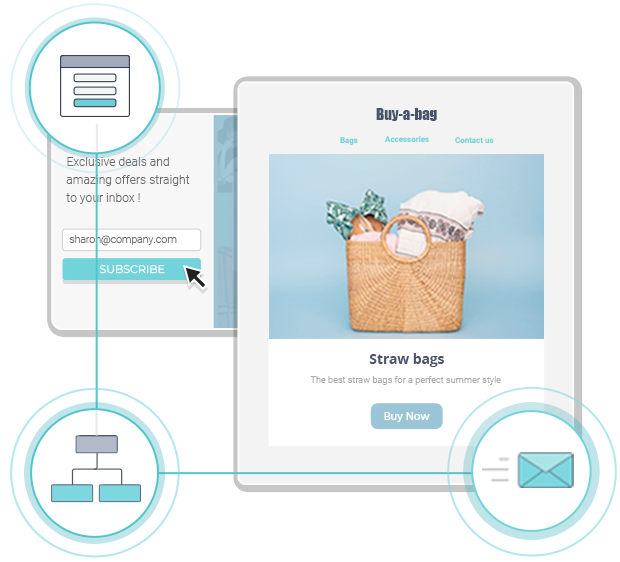
Benefits Of Email Marketing For Mobile Apps
As mentioned above, email marketing has numerous benefits for businesses. These apply to your mobile application as well.
More specifically, email will help you:
- Reach your target audience: target users with email marketing campaigns tailored to their needs based on interests, behavior, and demographics.
- Increase downloads and sign-ups: adding links to your emails can encourage subscribers to download your app.
- Boost app usage and engagement: keep them informed about new features, special offers, or updates.
- Promote user loyalty: educate your users with valuable content, such as tips and tutorials, and give them VIP in-app offers to increase loyalty.
- Get a great return on investment: with an ROI of about $42 for every dollar you spend email is one of the most cost-effective channels to use.
In a nutshell, email marketing is a simple and efficient way to promote and grow your mobile app and boost usage.
Now let’s look at the email marketing campaign types you can use.
Types Of Email To Use
Before you run your email marketing strategy, you need to determine the messages you need based on your business. For instance, if you have an eCommerce app, you need an abandoned cart email to remind your users to shop through it.
Below are some of the main email marketing campaign types you can use to grow your app and increase engagement and retention.
Onboarding Campaigns
These messages are great for introducing new users to your app and features. This will help you engage them better and minimize app abandonment due to insufficient nurturing.
Onboarding campaigns can include welcome sequences, app launch emails, tutorials, and tips.
Here is an example of a welcome email by the Headspace app:

Welcome emails don’t need to be complicated. Just keep them friendly, useful, and aesthetically pleasing. If you need a hand with your email copy, you can check our welcome email templates.
Retention Messages
Dedicated customer retention emails are the best tool to prevent users from churning and abandoning your mobile app.
These campaigns can include personalized product recommendations, educational content, and special features to encourage users to continue using the app.
The most common retention campaigns include:
- Cart abandonment messages
- Reminder emails
- Thank-you campaigns
- Feature announcements
Promotional Email Campaigns
Promotional messages are perfect for delivering special offers and discounts. For example, you can give your eCommerce app users an X% off when they purchase something through your app or give them a discount on their subscription.
You can use promotions to target different email list segments, such as inactive and trial users or those who haven’t purchased through your app in a while. Here’s an example by Uber:
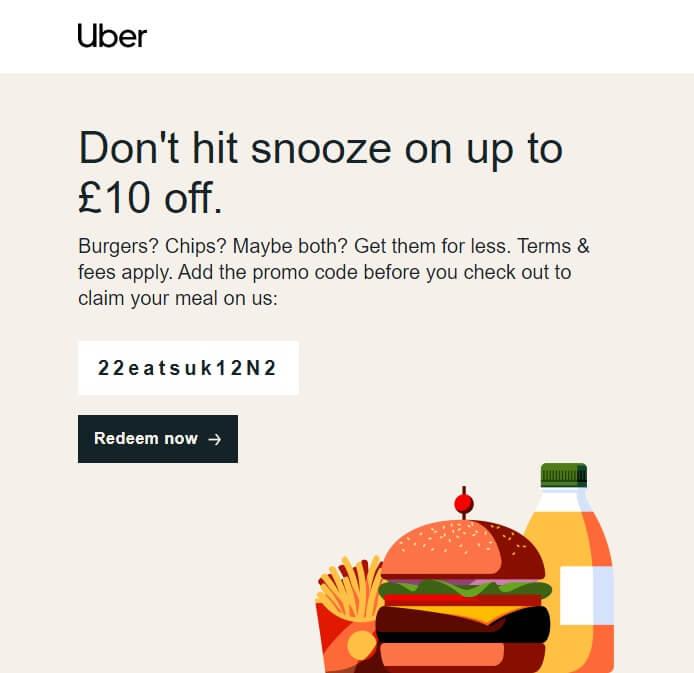
Re-engagement Campaigns
You can use email marketing campaigns to re-engage inactive users with special offers, incentives, or personalized messages to win them back and encourage them to reuse your mobile app.
Moreover, you can use these campaigns to discover disengaged users and either retarget them with push notifications and more personalized content or remove them from your email list.
Feedback Emails
Lastly, feedback campaigns will help you collect insights about your app and services. These emails can be surveys, polls, and questions that lead to suggestions.
Here’s an example by Free Now:
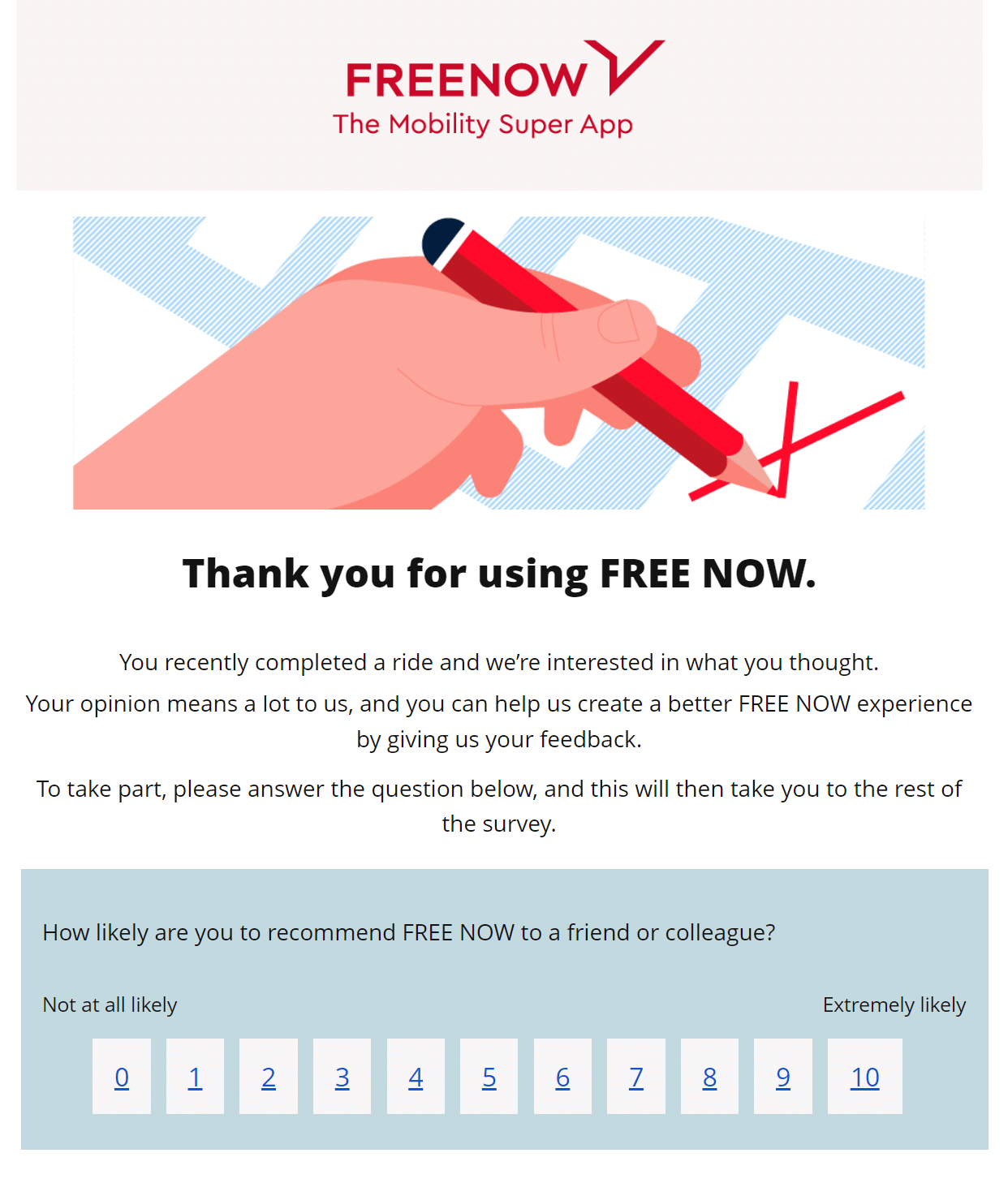
How To Create An Email Marketing Plan For Your Mobile App
Now that we saw some of the email marketing campaigns you can use, let’s see how to build an email marketing for apps strategy from scratch, starting with the tools.
1. Choose an Email Marketing Tool
The first thing you need to do before you start sending your email campaigns is to find the right tools for the job. Here, you need an email marketing platform to create, automate and deliver your messages to your users.
If this is your first time using an email service provider, you will need to select a user-friendly platform geared towards beginners. For example, ESPs like Moosend and Constant Contact are less complex than ActiveCampaign, which is for more advanced users.
To find the best email marketing platform, it’s essential to consider your budget, email list, the features you need, and the level of support you require. A great tool for your mobile apps should have:
- a drag-and-drop editor
- marketing automation tools
- responsive email templates
- popups and landing pages
- CRM functionality
- reporting and analytics
Moosend’s platform will let you access the above features, offering affordable pricing and scalability. You can create your first campaign from scratch or customize one of the pre-made designs to save time.
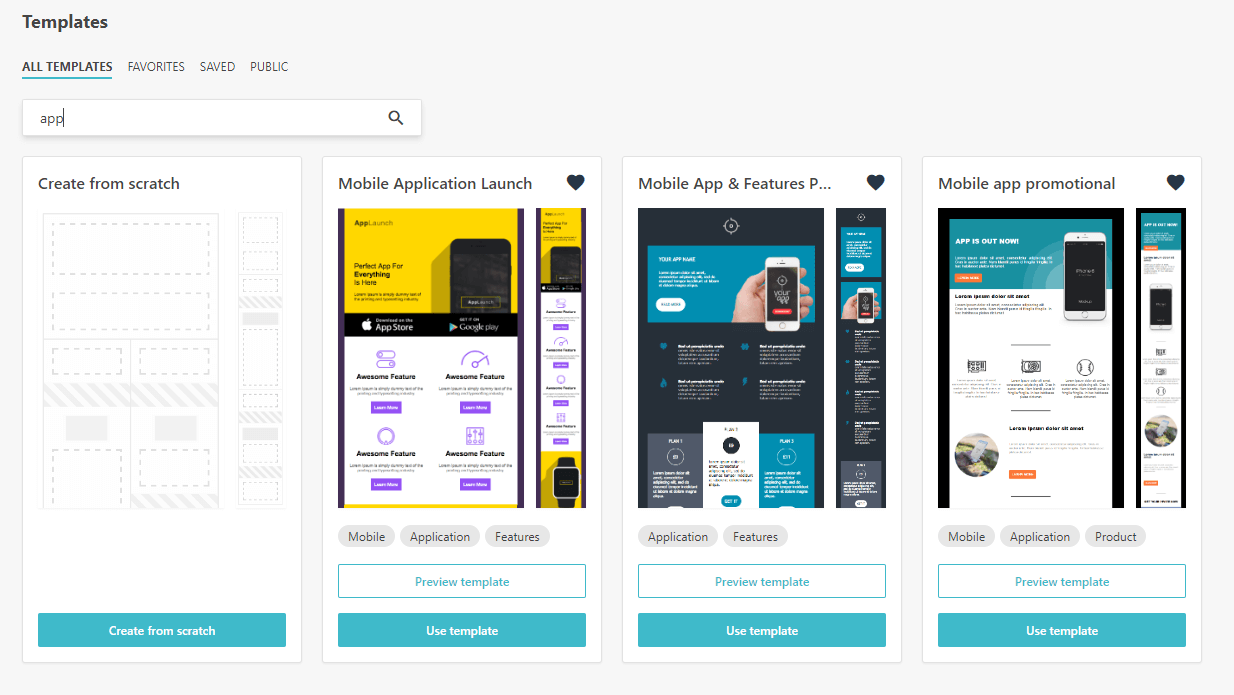
You can find and customize the above newsletter templates on Moosend’s template library. Moreover, use free plans and trials to test the platforms you are about to purchase to find the best one for your business.
If you want to try Moosend, sign up for the 30-day free trial to take the editor for a spin.
2. Build Your Email List
An email list is a valuable asset for mobile app marketers. Creating one before your app launches is a great way to share updates and news.
But how do you create an email list from scratch? The easiest way is to use your website and a newsletter signup form to collect email addresses and contact information.
Your newsletter signup forms don’t need to be complicated. You can focus on collecting your subscribers’ email addresses, names, or locations.
This way, you can perform simple personalization and segmentation to make your email content more relevant to each user.
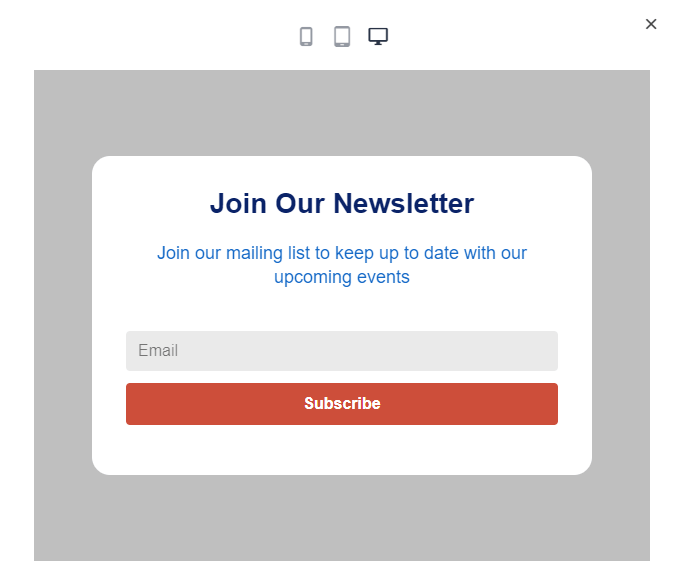
The perfect popup should have:
- a clear headline
- valuable copy
- the necessary form fields
- a converting CTA button
Moreover, you should highlight the benefits your new customers and users will get by signing up. Lastly, if you want to keep your list clean and healthy, you can use double opt-in to prompt your new subscribers to verify their email addresses before you add them to your list.
Now that you have your tool and email list, let’s see how to create a campaign for your email marketing for mobile apps plan.
3. Start With A Converting Subject Line
Subject lines are very important as they will determine the open rate of your email marketing campaign.
To create the perfect one for your users, you need to follow a few simple tips:
- Keep them short: make your subject lines concise and to the point. Aim to keep them under 50 characters for better readability.
- Use actionable language: use verbs and actionable language to make the subject line more engaging.
- Personalize them: make your messages more personal by using the recipient’s name or other relevant information you collected during sign-up.
- Make them fun: you can use emojis and wordplays to make your subject lines more engaging and get better open rates.
- Optimize them: find the best subject lines for your target audience by monitoring your email metrics.
Remember, your subject lines are the first thing your app users will see, so it’s important to make them interesting and concise to ensure better open and click-through rates.
If subject line creation looks like a difficult task, you can use a subject line tester like Refine to help you.
4. Create A Beautiful Email Design
Now that you have your subject line, it’s time to focus on your campaign. Creating a converting message is a combination of great design, valuable content, and strategic elements.
Start from scratch or choose a visually appealing design to save time and effort. Ensure you add your branding to avoid delivering a generic campaign that will not resonate with your audience.
To do so, use your brand colors, appropriate email fonts, and visuals to connect your messages to your app and be consistent across your emails.
Here’s an example by Beat (currently Free Now).
Subject line: Welcome aboard!
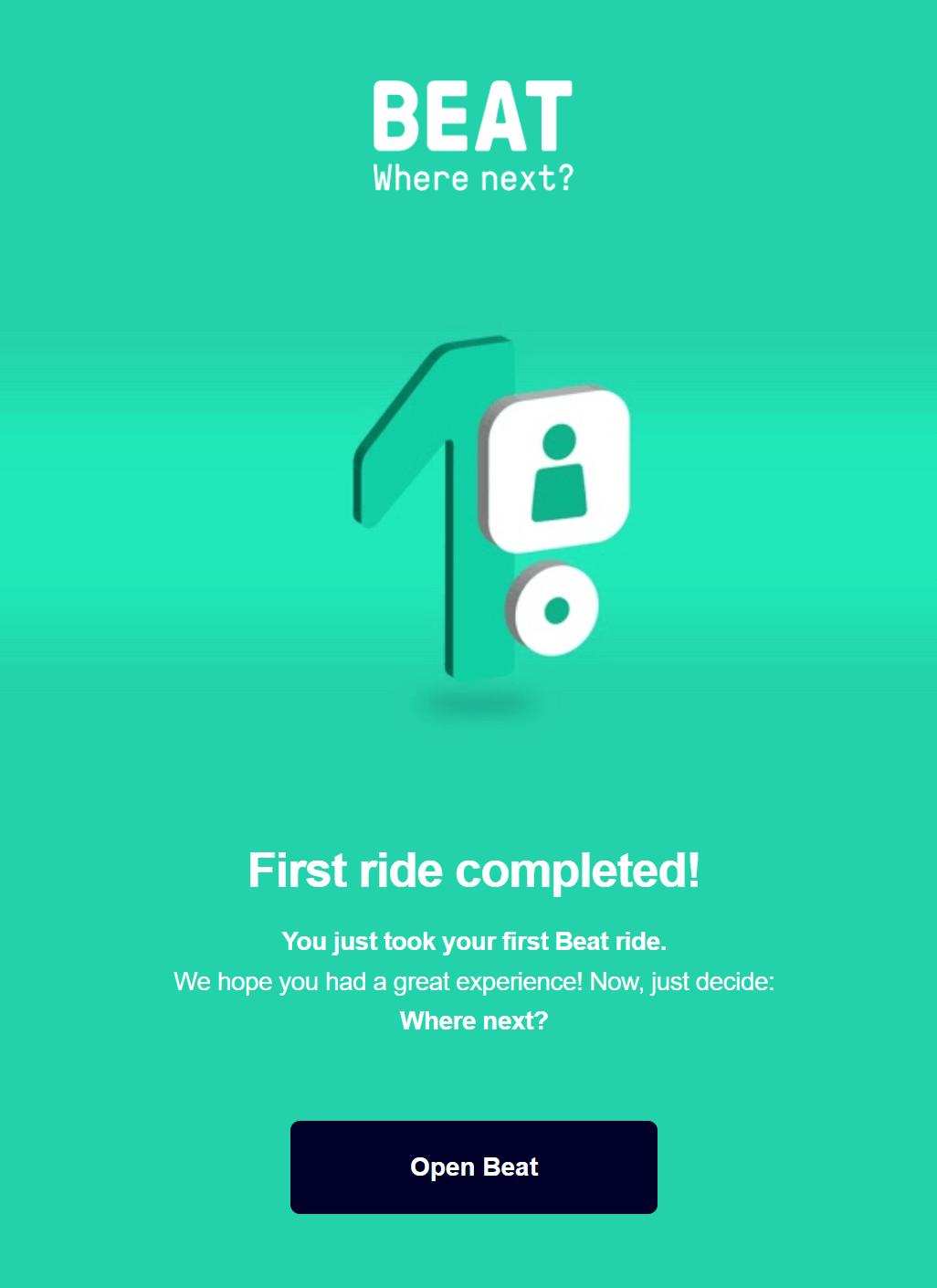
This mobile app used trademark colors and fonts to deliver a beautiful and simple campaign to first-time users.
Using colors in your emails is a simple and effective way to influence your recipients’ perceptions and emotions while being consistent.
5. Add The Right Elements
If you found the perfect design for your campaign, it’s time to add the right elements to fulfill your goal.
Here are the four most important things you need to add to succeed:
- Email copy: write compelling content to intrigue your recipients. Use a clear and conversational tone to make your message friendly, highlighting the benefits they will receive.
- Eye-pleasing visuals: use images, videos, GIFs, graphics, and other interactive elements to make your campaign visually appealing. Don’t overuse them because you may distract your audience from your CTA.
- A clear call-to-action: insert a clear CTA button to help the subscriber take the desired action. Also, make them stand out using vibrant colors and valuable copy.
- An unsubscribe button: don’t forget to place one in a visible position so your subscribers can opt out of your email list.
Here’s a great thank you email by Duolingo Plus that shows all of the above elements in action:
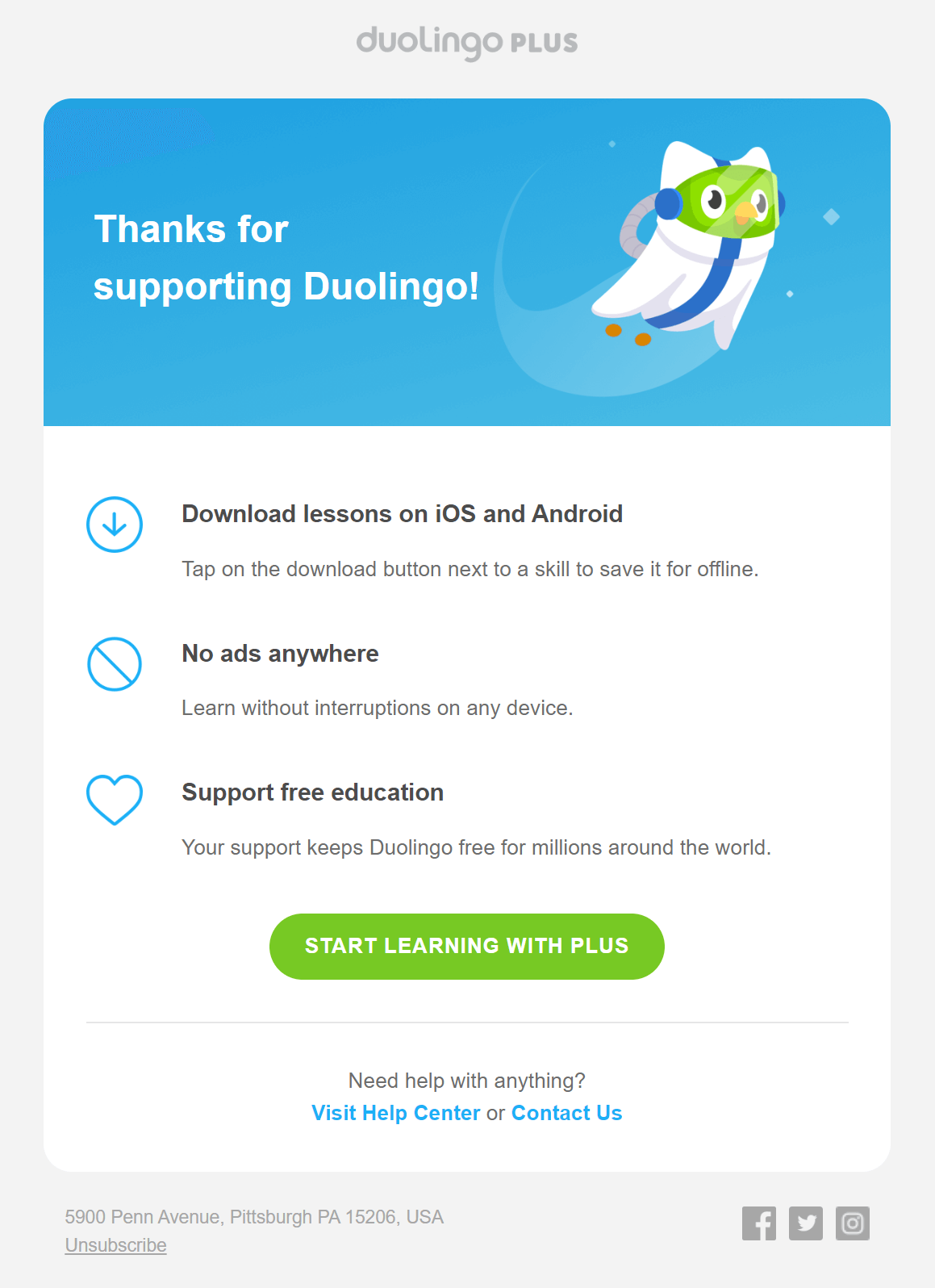
6. Insert Links To Your Mobile App
When it’s time to launch your mobile app, you will let your users know by sending them an app launch campaign.
However, to increase your user base, you need to add download links every time you deliver a campaign to them. You can create post-launch re-engagement campaigns or add a section in your newsletters to promote signups.
Here Canva adds a dedicated section in their feature campaign to promote their mobile app along with the desktop version:
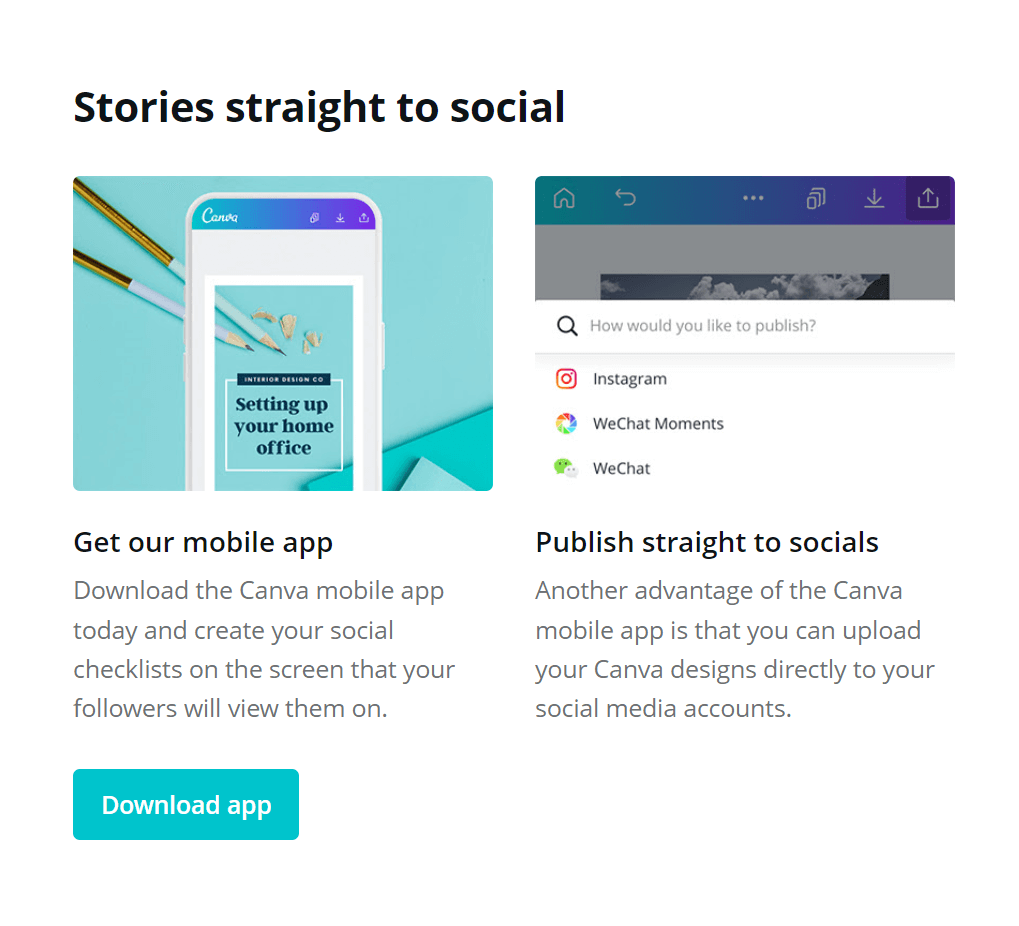
7. Make Your Campaign Mobile-Friendly
Since you want your subscribers to take the desired action in your mobile app, you need to ensure that your email campaigns are always mobile-friendly. You can use responsive email designs that adapt to different screen sizes and test your email on different devices to ensure it looks good on all of them.
Most email service providers will let you perform preview tests and create mobile versions of your campaigns to avoid issues.
Moosend’s platform, for instance, allows you to preview your design to help you fix potential issues before you send them to your audience.
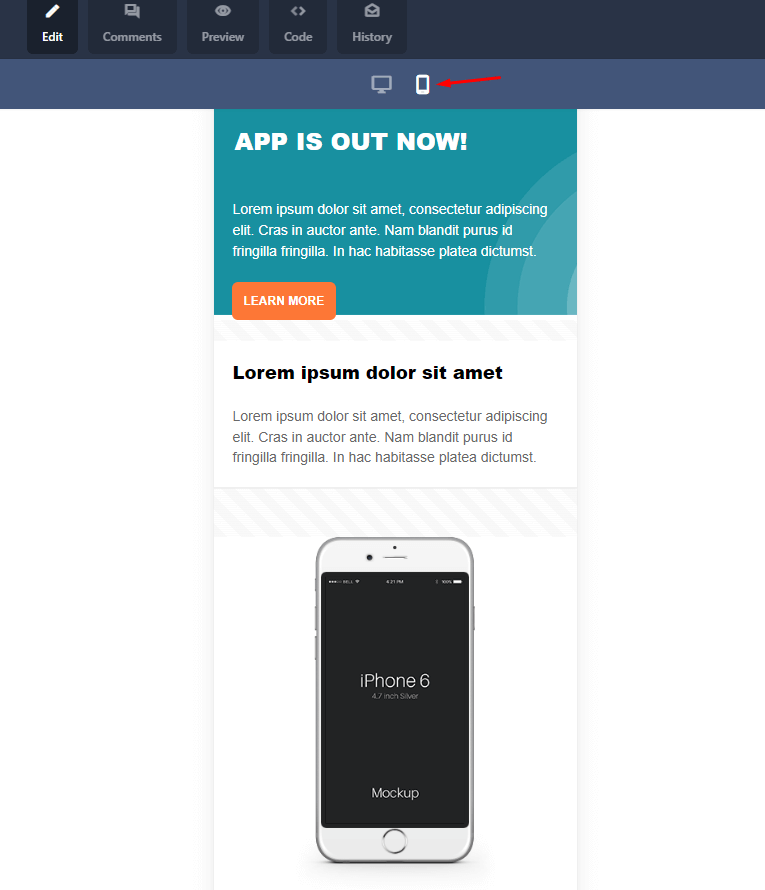
Tools like this are essential to enhance your email marketing for mobile apps strategy before you encounter actual problems.
8. Track Your Performance
Creating a beautiful campaign for your app is easy, but finding what your audience likes to see will need some extra work.
However, your email marketing tool will provide you with everything you need to monitor your email campaigns, run tests, and optimize them accordingly.
To track performance, you can use the available reporting and analytics features found in your ESP. Among other things, you will be able to see important email metrics, including:
- open rates
- click-throughs
- conversions
- bounce rates,
- open rate by device type or location
9. Optimize Your Campaigns
After you collect data, you can use these insights to determine the success or failure of your email marketing campaign for your mobile app.
If your metrics aren’t ideal, you can start testing different designs and content variations to see what works best for your audience. A/B testing, in this case, will help you compare different elements of your email campaign and improve them for higher open and click-through rates.
Now that we covered the essential steps you need to build your email marketing for apps strategy, it’s time to look at some email tools you can use.
4 Best Email Marketing Services For Apps
Below, we’ll explore three of the best email marketing apps to kickstart your email plan, including their features and pricing.
Moosend

Moosend is an all-in-one email marketing and marketing automation software platform geared towards small businesses, eCommerce stores, and start-ups. It offers a variety of features for creating email newsletters, automated workflows, autoresponders, landing pages, and subscription forms.
With Moosend’s editor, you can craft visually appealing emails for your users, segment your audience, and track performance through real-time reporting and analytics. This service also offers advanced email automation features. These will allow you to set up abandoned cart sequences and product recommendations for your new customers.
Moreover, you can set up transactional emails to ensure your mobile app users receive all the necessary information regarding in-app purchases, confirmation emails, and password resets.
Moosend has excellent deliverability (98%) to land your campaign in subscribers’ inboxes. Lastly, it integrates with numerous apps, such as eCommerce platforms, CRM software, and social media networks, to streamline your strategy.
Pricing: Paid plans start at $9/month with the Pro subscription for 500 contacts and unlimited emails.
You can also register for the 30-day free trial to try all the features before committing.
Mailchimp
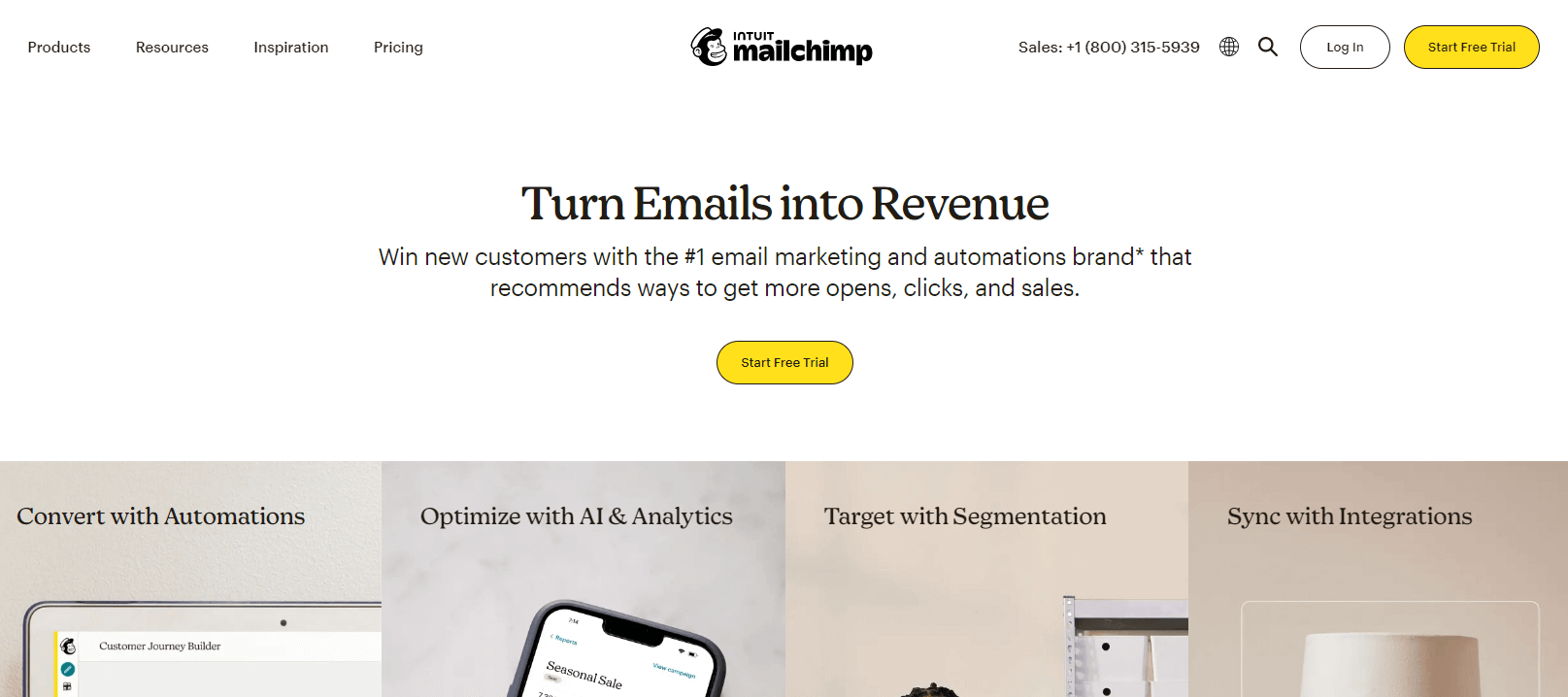
Mailchimp is a popular email marketing software with advanced features and functionality to help you set your email marketing for apps strategy in motion.
This service offers a range of features, including a user-friendly email builder, pre-made newsletter templates, a customer journey editor, segmentation, analytics, and more to help you.
Moreover, Mailchimp will give you robust A/B Testing tools to optimize your campaigns. If you want more advanced functionality, use the Multivariate Testing option in the Premium plan for more in-depth testing.
Lastly, this tool integrates with numerous third-party apps like Shopify to assist your efforts.
Pricing: Paid plans start at $20/month with the Standard for 6K monthly email sends. A limited free plan is available for 1K emails and 500 subscribers.
While popular, this tool has a steep pricing structure. So if you are just getting started, you can check some of the best Mailchimp alternatives in the market instead.
Constant Contact
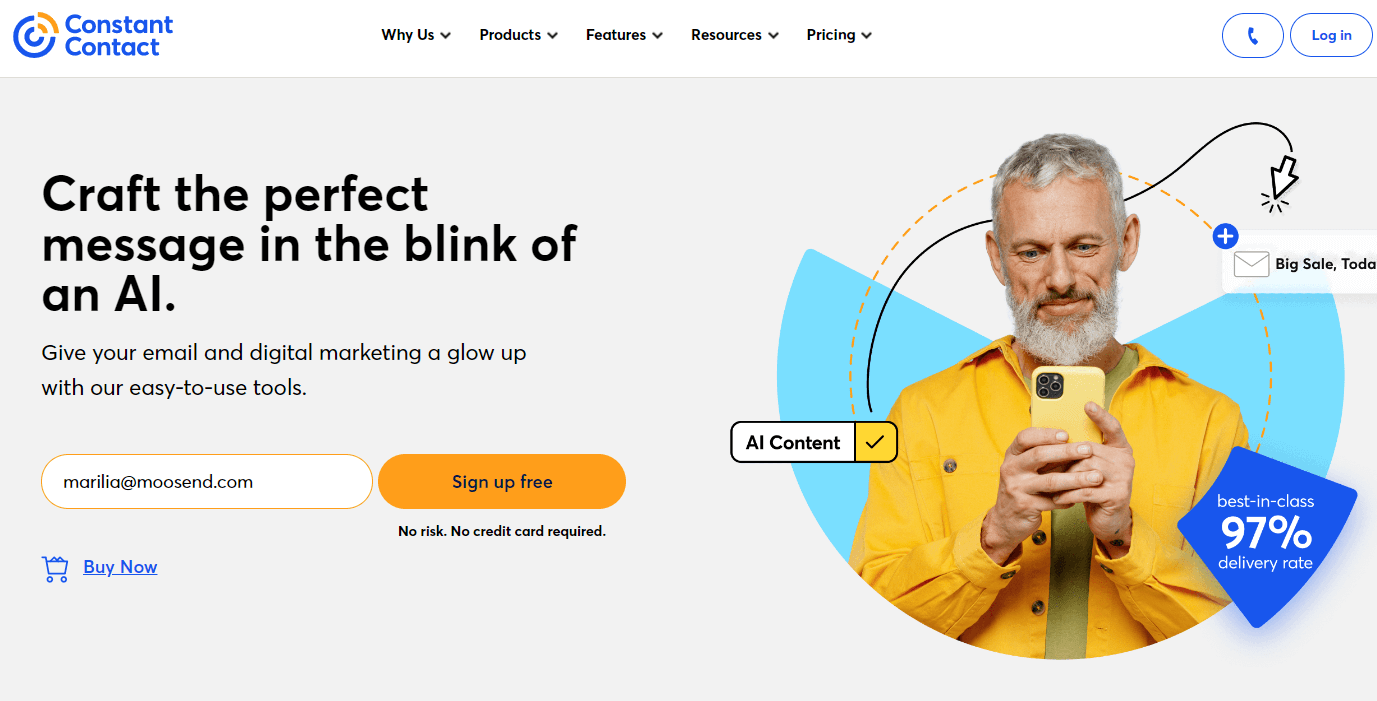
Constant Contact is another digital marketing tool that will give you access to an HTML editor, subscriber list segmentation, SMS marketing tools, and detailed reporting and analytics.
Regarding email creation and automation, this solution will provide you with a drag-and-drop editor and a workflow builder to create your messages and automated sequences for your app users.
Moreover, you can benefit from the dedicated event marketing features to boost your registrations and collect feedback and insights.
Additionally, you can use Constant Contact’s resources and support, such as webinars, training, and knowledge base, to get the most out of the tool and power up your email efforts.
Pricing: Paid subscriptions start at $12/month with the Lite and $35/month for the Standard. You can also test the tool with the 14- or 60-day free trials.
Mailtrap
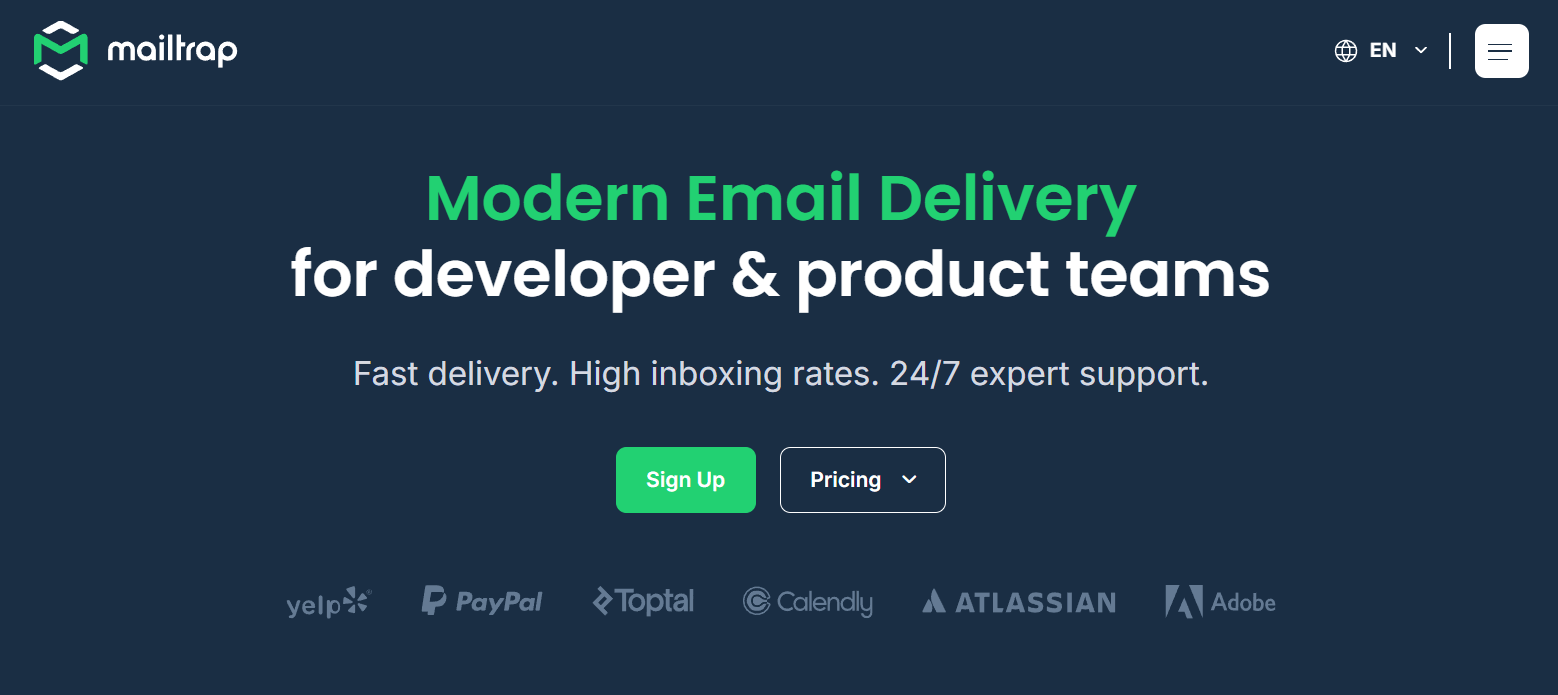
Mailtrap is a powerful email delivery platform built for developers and product teams. It supports both transactional and marketing emails through a flexible infrastructure that includes a RESTful email API, SMTP service, and SDKs for major languages like Python, PHP, Node.js, Ruby, and more.
With Mailtrap, you can send transactional emails such as booking confirmations, password resets, and purchase receipts — all with high deliverability across inbox providers. For promotional campaigns, the platform offers a drag-and-drop email builder (and an HTML editor) with access to a free stock library.
A standout feature is the dedicated Bulk Stream, which isolates marketing emails from transactional traffic to improve inbox placement and maintain a strong sender reputation. You’ll also get access to advanced analytics that break down performance by domain, provider, stream, and category.
Pricing: All Mailtrap’s pricing plans include transactional, bulk, and marketing emails. The free plan includes up to 3,500 emails per month. Paid plans begin at $15/month and offer higher sending volumes with additional features, like dedicated IP, auto warm-up, and SaaS safeguard.
Creating A Solid Email Marketing For Mobile Apps Plan
Email marketing is a cost-effective way to promote your mobile app and engage with new and existing users.
Using the above strategies, you can create a performing strategy to drive engagement, increase your app downloads, and keep your users updated.
Before you start, find the right tool for your business by trying the available free plans or trials of the marketing solutions that interest you the most.
If you want to discover more tactics, check our email marketing best practices guide to step up your strategy as you go to drive better results.
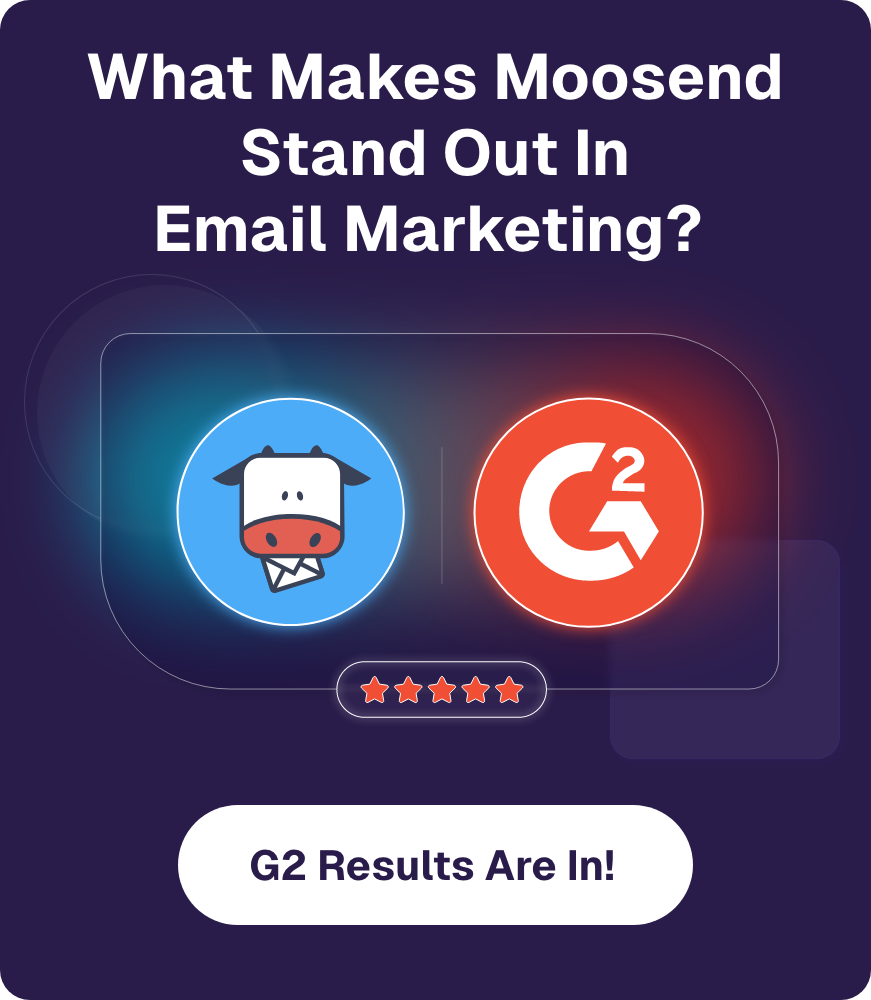


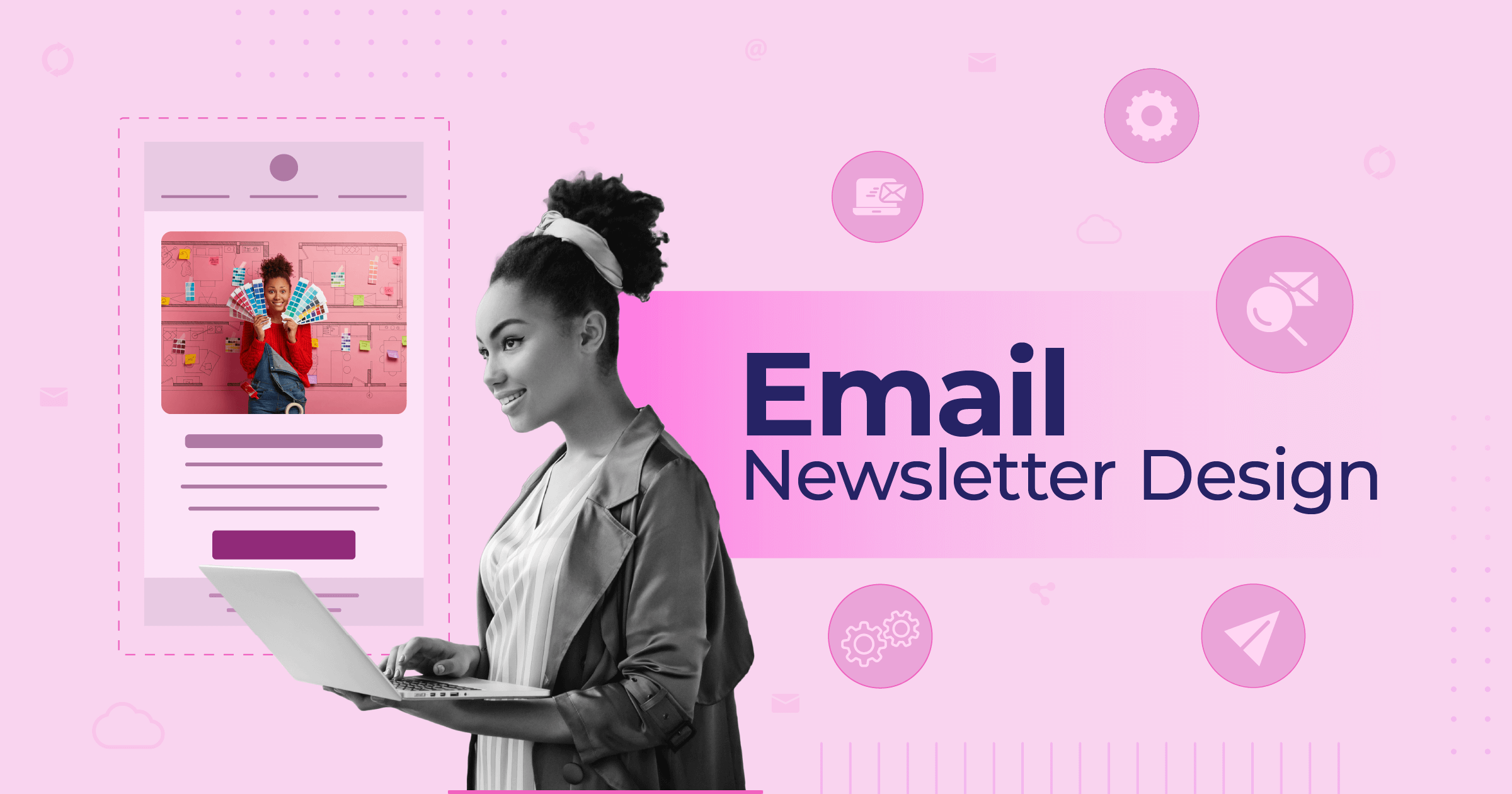
 Published by
Published by

 Published by
Published by